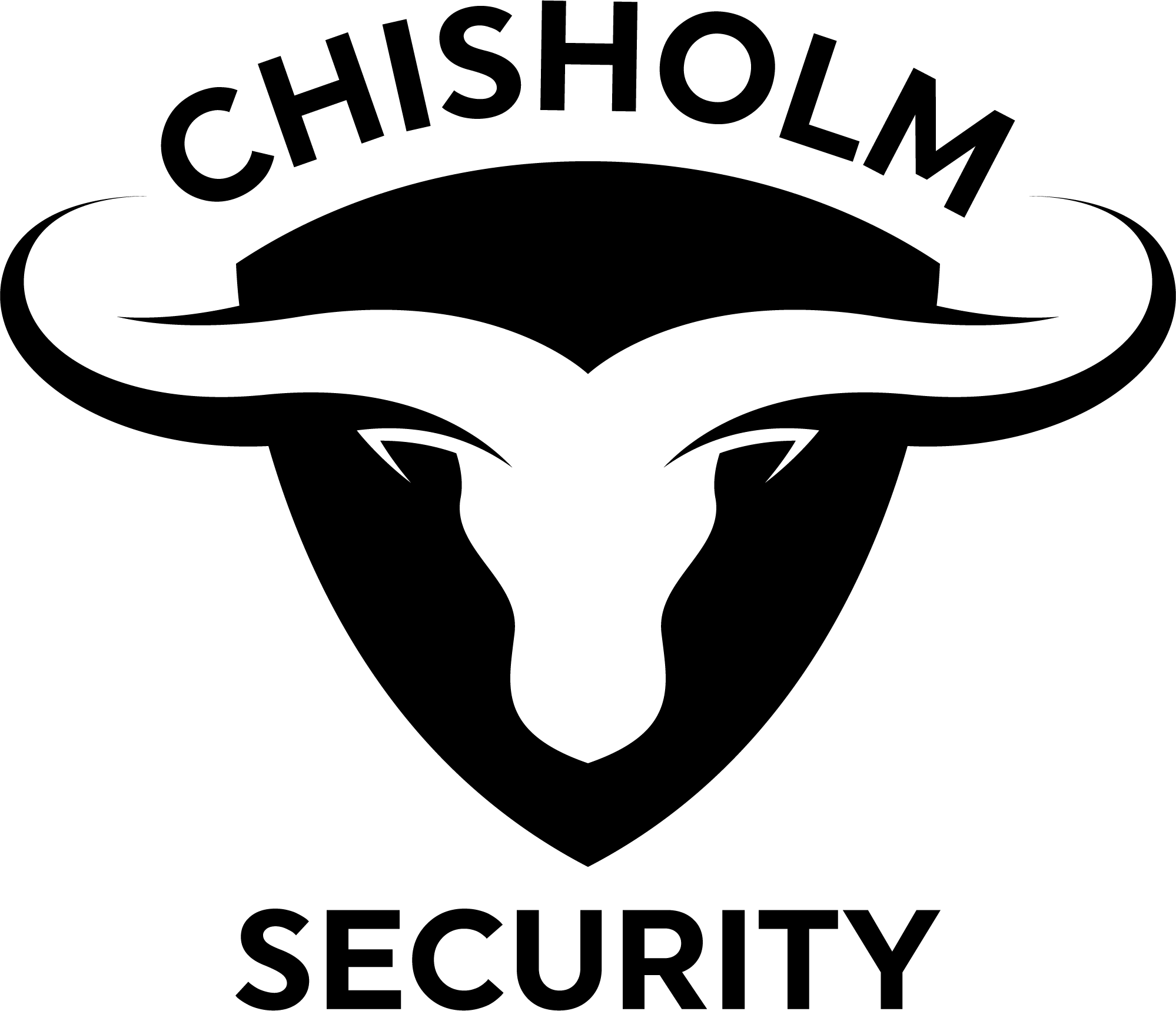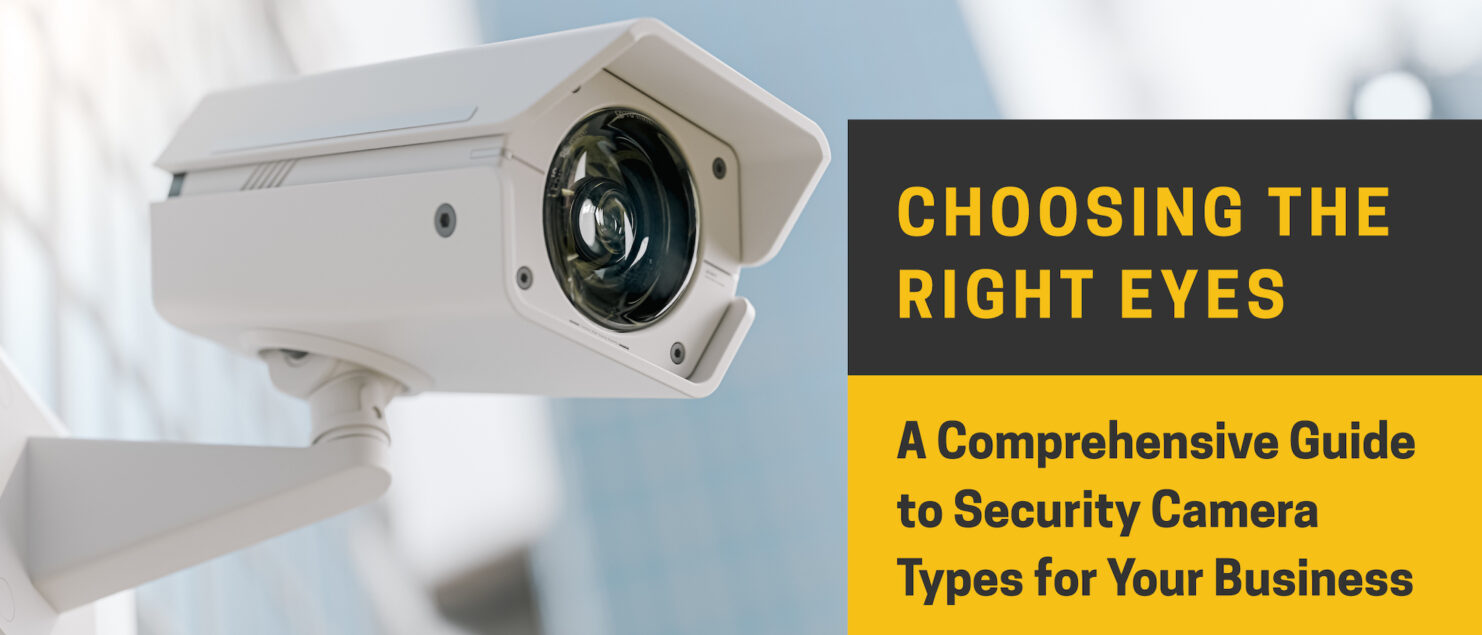Choosing the Right Security Camera for Your Business
Choosing the right security camera for your business can feel overwhelming, given the many options available. But it doesn’t have to be. It is important to focus on what matters most and the business’s specific needs. Various camera technologies and features cater to different surveillance needs, ensuring that your investment provides maximum value.
The right security camera type can significantly improve your business’s safety and operational efficiency, helping you protect what is important. To make the best choice, consider key factors like camera resolution, field of view, and night vision. These basics ensure that the cameras capture clear footage, day or night. For a more robust security system, advanced features like cloud storage and AI-based analytics can offer smarter monitoring and quicker responses.
It is also important to consider how the security cameras fit with other systems. Smooth integration means improved response times, fewer vulnerabilities, and better security measures.
Key Takeaways
- To choose the right security camera type, it is important to focus on the specific surveillance needs of the business.
- Factors such as camera resolution, field of view, and night vision make for a good basic setup, while features like cloud storage and AI-based analytics ensure a more robust system.
- The security camera system should integrate seamlessly with other business systems for improved overall effectiveness.

Factors to Consider When Selecting the Right Security Camera
Choosing the right security camera for your business involves evaluating several important features. These include resolution, viewing angles, storage options, bandwidth, and connectivity. By considering these factors carefully, we can select the most suitable security camera system tailored to our business requirements.
Resolution and Image Quality
Resolution is an essential factor to consider when selecting the right security camera. High-resolution cameras provide clearer and more detailed images, which can be crucial for identifying intruders or analyzing incidents. Options range from 720p to 4K, with 1080p often being the standard choice for businesses.
High-definition cameras may also include features like wide dynamic range (WDR), which improves image quality in varying lighting conditions. It is advisable to consider your specific needs, such as the level of detail required and the location’s lighting.
Viewing Angle
The viewing angle determines how much area a single camera can cover. A wider viewing angle allows you to monitor more space with fewer cameras. While standard cameras might offer a 60-degree view, wide-angle lenses can provide upward of 120 degrees.
This is particularly useful for large areas like parking lots or warehouses. Picking a camera with the right lens size and viewing angle ensures comprehensive coverage and reduces blind spots, enhancing overall security.
Video Footage Storage Options
Storage options are another important factor to consider for retaining footage for future reference. Options include on-site storage, such as DVRs or NVRs, and cloud storage, which offers scalability and remote access. Hybrid solutions are also available.
Each option has its pros and cons—local storage provides quicker access but is vulnerable to physical tampering, while cloud storage ensures durability but might incur ongoing costs. Evaluating your business’s security needs and budget will guide your choice.
Bandwidth Requirements
Bandwidth requirements impact the overall functionality of your security system. High-resolution cameras and those with features like motion detection and alerts consume more bandwidth. Ensuring that your network can handle the additional load is necessary to prevent lag or disruptions in video feeds.
Calculating the total bandwidth required involves considering the resolution, frame rate, and number of cameras. It’s important for us to coordinate with IT teams to ensure the network infrastructure can support the system.
Power and Connectivity
Power and connectivity options include wired and wireless configurations. While wired cameras generally offer more reliability and are less susceptible to interference, wireless cameras provide flexibility in placement. These cameras eliminate the need for extensive cabling, reducing installation costs and complexity.
Some cameras are powered via Ethernet (PoE), combining data and power in a single cable, simplifying installation.
Battery-powered cameras offer complete freedom in placement but require regular maintenance. Choosing the appropriate power and connectivity solution depends on the business’s layout and specific security needs.
Analog Cameras
Analog cameras are one of the oldest types of security cameras but remain popular due to their affordability and reliability. They transmit video over a coaxial cable to a digital video recorder (DVR), which then converts the analog signal to digital.
While they may lack the high resolution and advanced features of IP cameras, analog cameras are sufficient for basic monitoring needs. They are often used in smaller businesses or facilities where budget constraints are a factor.
Advanced Security Camera Features
Advanced security camera features enhance the security of any business environment. They offer a range of functionalities from high-resolution imaging to sophisticated recognition capabilities. These advanced features enable us to create a robust and comprehensive security system tailored to our specific needs, ensuring high levels of safety and efficiency.
High-Resolution Cameras
High-resolution cameras capture detailed images and footage. They typically range from 1080p to 4K, allowing us to discern fine details like facial features and small objects.
Benefits:
- Enhanced Image Quality: Superior clarity and detail.
- Zoom Capabilities: Digital zoom without losing much quality.
- Better Identification: Crucial for recognizing faces and license plates.
High-resolution cameras are integral for environments requiring detailed surveillance, such as banks and retail stores.
Dome Cameras
Dome cameras are widely used in modern surveillance because they are versatile and discreet. Their dome-shaped enclosure provides several advantages.
Benefits:
- Vandal Resistance: Robust design makes them difficult to tamper with.
- Wide Coverage: Wide-angle lenses cover larger areas.
- Discreet Surveillance: Less conspicuous, reducing the likelihood of avoidance.
These benefits make dome cameras ideal for high-risk areas where vandalism and unauthorized access are concerns.
IP Cameras
IP cameras are digital cameras that transmit data over the internet. They are better than traditional analog cameras in several ways.
Benefits:
- Remote Access: View footage from anywhere via the internet.
- High Image Quality: Often superior to analog counterparts.
- Scalability: Easy to add more cameras to the network without extensive rewiring.
IP cameras are excellent for businesses with multiple locations or remote monitoring needs.
License Plate Recognition Cameras
License Plate Recognition (LPR) cameras are specialized cameras designed to capture and read vehicle license plates.
Benefits:
- Specialized Lenses: Capable of capturing plates at high speeds.
- Software Integration: Often integrated with databases for immediate data processing.
- Enhanced Security: Useful for gated communities, parking lots, and police enforcement.
By integrating LPR cameras, we can enhance vehicular security and manage access control more effectively.
Bullet Cameras
Bullet cameras are typically cylindrical and are designed for long-range viewing. These cameras are often used in outdoor environments, mounted on walls or ceilings to monitor driveways, parking lots, and perimeters.
Benefits:
- Generally Weatherproof: Ensures continuous monitoring and protection, regardless of harsh weather conditions.
- Built-in Infrared (IR) LEDs: Some bullet cameras come with inbuilt infrared LEDs for night vision capabilities.
- Conspicuous Appearance: They can act as a deterrent to potential intruders.
Choose a Camera System Tailored for Your Business Needs
When selecting security camera systems, it’s crucial to consider your unique business needs and operational requirements. Focusing on these elements ensures we choose the most effective and efficient surveillance solutions.
Business Security Needs
We need to start by determining the specific security threats our business faces. For example, retail stores may experience theft and require cameras with high-resolution video to identify suspects. In contrast, a corporate office might prioritize general surveillance to monitor entry points.
Consider factors like the layout of our premises, the level of detail required, and whether indoor or outdoor coverage is needed. For outdoor environments, weather-resistant cameras with night vision capabilities can be essential. Additionally, integration with existing security infrastructure, such as alarm systems or access control, can streamline our overall security management.
Assessing our daily operations, peak working hours, and high-risk areas will guide us in placing cameras effectively and selecting the right features.
Small Business Surveillance Considerations
For small businesses, cost-effective yet reliable solutions are paramount. We need to weigh the benefits of different camera types, such as dome cameras for wide coverage or bullet cameras for long-distance monitoring. Small businesses often benefit from systems that are easy to install and maintain without extensive technical expertise.
Incorporating wireless cameras can reduce installation complexity and cost, while cloud-based storage options offer flexibility in managing and accessing recordings. Cameras with motion detection and push notifications enable us to respond quickly to incidents, which is particularly useful for businesses with limited staff.
When selecting cameras, we should also consider future scalability, allowing for the addition of more cameras as our business grows. This future-proofing ensures long-term security without significant additional costs.
Make the Right Choice for Your Business’s Safety
By understanding basic factors like resolution, viewing angle, and storage options, you can select a camera that meets the security needs of your business. Advanced features such as high-resolution imaging and IP cameras can further boost your surveillance system, providing better coverage and security.
To ensure your business is fully protected, consider a camera system tailored to your unique requirements. Chisholm Security offers expert guidance and a range of top-quality security solutions to help you make the best choice. Reach out to Chisholm Security today to secure your business with a system that fits perfectly.

